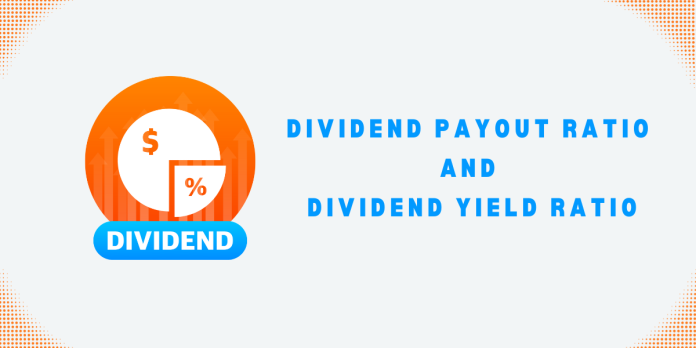The terms “dividend payout” and “dividend yield” are often used interchangeably, causing confusion. However, it’s essential to clarify that they represent distinct concepts in finance.
Let’s explore the key differences to better understand them.
Dividend Payout Ratio and Dividend Yield Ratio are both important financial metrics used in the context of dividend payments by a company. Here’s a brief explanation of each, along with an example to illustrate the differences:
- Dividend Payout Ratio: It is a financial metric that shows the proportion of a company’s earnings that it pays out to shareholders in the form of dividends.
It is calculated as:
Dividend Payout Ratio = Total Dividends Paid/Earning*100
Example: Suppose Company ABC reported earnings of Rs 1,000,000 for the year and paid Rs 4,00,000 in dividends to shareholders. The dividend payout ratio would be:
Dividend Payout Ratio} = 4,00,000/1,000,000* 100 = 40%
This means Company ABC paid out 40% of its earnings as dividends and retained the remaining 60% for other uses like reinvestment, debt reduction, or reserves.
In the discussion of dividend policy and payout ratios, consider the views of three influential scholars: James E. Walter, Gordon, and Modigliani-Miller.
- Walter advocates that if a firm can earn a higher return on retained earnings than shareholders could elsewhere, it should prioritize financing its operations with retained earnings, reducing the need for external capital.
- Gordon argues for an all-equity capital structure, emphasizing that dividend decisions impact a firm’s value significantly, suggesting a focus on distributing earnings to shareholders.
- Modigliani-Miller’s theory highlights that a firm’s value depends solely on its earning power from investment policy, with dividend distribution having no substantial impact on overall firm value.
- These perspectives offer diverse insights into dividend policy, influencing the discourse on corporate finance.
- Dividend Yield Ratio: It measures the return on investment (ROI) an investor can expect from owning a particular stock based on its dividend payments. It is calculated as:
Dividend Yield Ratio= Annual Dividend per Share/Stock Price*100
It helps investors assess the income potential of owning a specific stock relative to its current market price.
Example: Suppose Company XYZ’s stock is trading at Rs 50 per share, and it pays an annual dividend of Rs 2 per share. The dividend yield ratio would be:
Dividend Yield Ratio= 2/50*100= 4%
This means that if an investor buys Company XYZ’s stock at Rs 50 per share, they can expect to receive a 4% annual return on their investment in the form of dividends.
We can interpret,
A high dividend yield (e.g. 5%) indicates that the stock offers a relatively attractive income stream compared to its current market price.
A low dividend yield (e.g. 1%) suggests that the stock may not be an attractive income-generating investment relative to its price.
Conclusion
In summary, the dividend payout ratio focuses on the company’s dividend distribution policy, while the dividend yield ratio helps investors assess the attractiveness of a stock for generating dividend income. Both metrics provide valuable insights into different aspects of dividend-related analysis.


